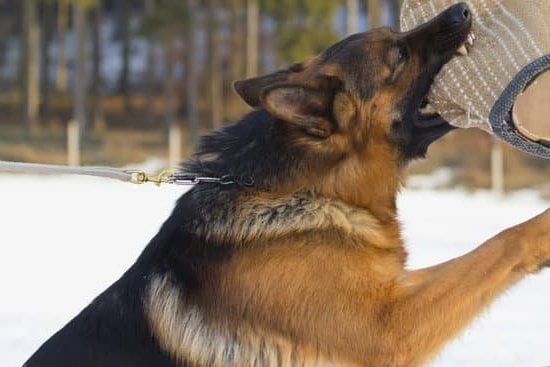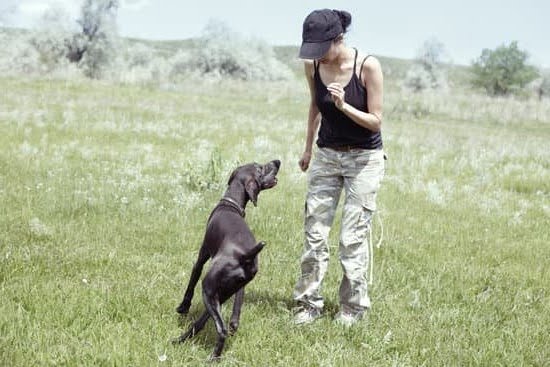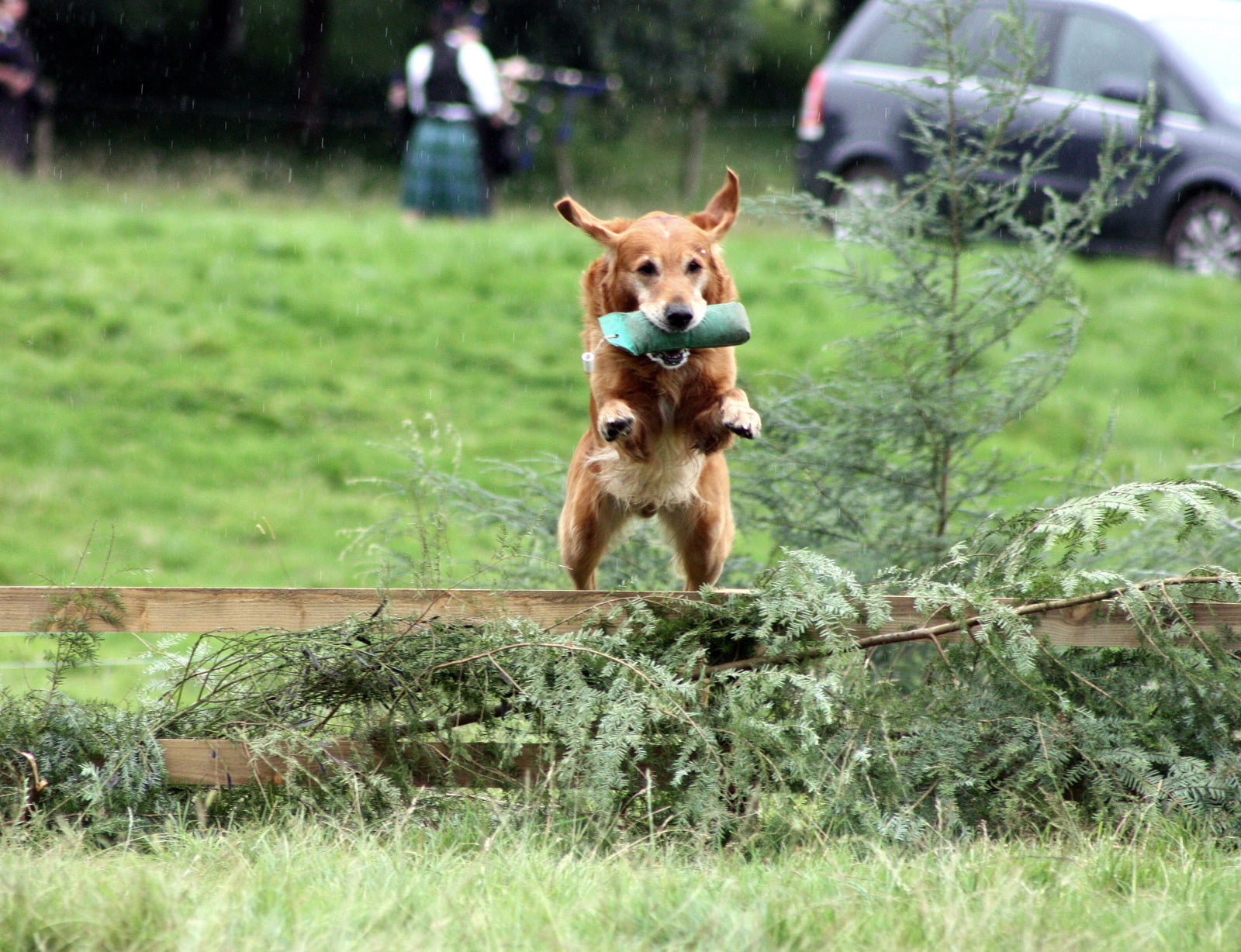Training a dog can be an exciting and fulfilling journey for both the dog and their owner. However, there may come a time when it seems like all the progress made in training has suddenly disappeared, leaving owners puzzled and frustrated.
This phenomenon is known as regression in dog training, and it can occur even after months or years of successful training sessions. Understanding why regression happens and how to address it promptly is crucial to maintain consistent progress and strengthen the bond between you and your furry companion.
Regression in dog training refers to a sudden decline in obedience, behavior, or response to commands that the dog had previously learned. It can manifest itself through disobedience, lack of focus, selective hearing, or even reverting back to undesirable behaviors. Addressing regression promptly is vital because if left unattended, it can become a habit that is difficult to break and may lead to further challenges in training.
Identifying the signs of regression in your dog’s training is crucial for effective intervention. One common sign of regression is a sudden decline in obedience and behavior during training sessions or everyday interactions. Your dog may start ignoring previously learned commands or responding inconsistently. These signs should not be ignored, as they indicate possible regression issues that need attention.
Inconsistent responses to previously learned commands are another telltale sign of regression. Your once reliable pup may start hesitating or completely disregarding familiar cues they used to respond to effortlessly. This inconsistency is often frustrating for both dogs and their owners but should be addressed with patience and understanding rather than frustration.
In the following sections of this article series, we will explore common reasons for regression in dog training such as inconsistent training methods, environmental changes or disruptions, and physical or medical issues affecting your pup’s ability to learn. We will also delve into how age and development play a role in regression during adolescence and senior years.
Stay tuned as we provide valuable insights on addressing regression, strategies and techniques to overcome it, and tips for creating a consistent training routine that prevents regression from occurring in the future.
Identifying the Signs of Regression in Your Dog’s Training
Regression in dog training refers to a sudden decline in obedience and behavior, as well as inconsistent responses to previously learned commands. It is important for dog owners to be able to identify these signs of regression in order to address them promptly. By doing so, they can prevent further setbacks and work towards maintaining consistent progress in their dog’s training.
One of the most common signs of regression in a dog’s training is a sudden decline in obedience and behavior. This can manifest as a refusal to follow previously learned commands, such as sitting or staying. For example, a well-trained dog who used to easily sit on command may start ignoring the command or simply refuse to comply. This regression can be frustrating for dog owners who have put time and effort into their dog’s training.
In addition to a decline in obedience, inconsistent responses to previously learned commands are another key indicator of regression. A well-trained dog should consistently respond appropriately when given a command. However, during periods of regression, dogs may display inconsistency by sometimes following the command correctly and other times ignoring it completely. This inconsistency can be confusing for both the owner and the dog.
To summarize, identifying the signs of regression in your dog’s training is crucial for addressing the issue promptly. These signs include a sudden decline in obedience and behavior, as well as inconsistent responses to previously learned commands. By being aware of these indicators, you can take appropriate steps to resolve regression and maintain consistent progress in your dog’s training journey.
Common Reasons for Regression in Dog Training
Regression in dog training can be frustrating and confusing for dog owners. Just when you thought your furry friend had mastered a command or behavior, they suddenly seem to forget it altogether. It is important to understand that regression is a common phenomenon in dog training and can occur for various reasons. Identifying the root cause of regression is essential in addressing it effectively.
One common reason for regression in dog training is a lack of consistency in training methods. Dogs thrive on routine and structure, so if there are inconsistencies in how commands are taught or reinforced, it can lead to confusion and regression. It is crucial to establish clear expectations and use consistent cues and reinforcement techniques throughout the training process.
Environmental changes or disruptions can also contribute to regression in dog training. This can include moving to a new home, having guests over frequently, or any other significant change that disrupts your dog’s daily routine. Dogs are sensitive creatures, and major changes can impact their ability to focus and retain information. In such cases, it may be necessary to provide extra patience and understanding during the training process.
Additionally, physical or medical issues can play a role in regression during training. If your dog is experiencing pain or discomfort, they may not be able to perform certain commands as easily as before. It is always recommended to consult with a veterinarian if you suspect that physical issues may be contributing to your dog’s regression.
To address regression effectively, it is important to reevaluate your training approach. Consider going back to basics and reinforcing foundational commands before progressing further. Seek professional help if needed, as an experienced trainer can provide guidance tailored to your specific situation.
Overall, addressing the common reasons for regression in dog training requires patience and perseverance from both owners and dogs alike. By understanding the root causes of regression and implementing appropriate strategies, you can help your furry companion get back on track towards success in their training journey.
Understanding the Role of Age and Development in Regression
Regression in dog training can occur at various stages of a dog’s life, often related to their age and development. Understanding the role of age and development can help explain why regression may happen and how to address it effectively.
Regression during adolescence
Adolescence is a period of significant change for dogs, both physically and behaviorally. Just like human teenagers, dogs go through a phase where they may become more independent, impulsive, and testing boundaries. This can lead to regression in training as they try to assert their independence or simply become less focused on obeying commands.
To address regression during adolescence, it is important to be patient and understanding. Recognize that this phase is temporary and continue to provide consistent training with clear expectations. Reinforce the basic commands your dog has learned while gradually introducing new challenges. This will help them stay engaged and focused on their training goals.
Regression in senior dogs
As dogs age, they may experience physical or cognitive changes that can contribute to regression in training. Senior dogs may have reduced energy levels or mobility issues, which could impact their ability or willingness to perform certain tasks. Additionally, cognitive decline associated with aging can affect memory retention and learning abilities.
When dealing with regression in senior dogs, it is essential to consider any potential physical issues that might be hindering their progress. A visit to the veterinarian can help identify any underlying medical conditions or discomfort that need addressing. Adjusting the training sessions to accommodate your senior dog’s capabilities and taking a gentle approach can help them maintain their skills while adapting to age-related changes.
Understanding the role of age and development in regression allows dog owners to tailor their approach based on the specific needs of their canine companion. By recognizing these factors, owners can navigate through periods of regression more effectively while maintaining a positive and supportive training environment for their dogs.
How to Address Regression in Your Dog’s Training
Addressing regression in your dog’s training is essential to ensure continued progress and maintain their obedience and behavior. When you notice signs of regression, it is crucial to take action promptly to address the underlying issues and prevent further setbacks. This section will provide guidance on how to effectively address regression in your dog’s training.
Reevaluating your training approach:
To address regression in your dog’s training, start by reevaluating your training approach. Evaluate if you have been consistent with your methods and if any changes or adjustments need to be made. Consider whether there have been any new distractions or disruptions that could be affecting your dog’s ability to focus during training sessions. Take time to reflect on what may have contributed to the regression and make necessary adjustments moving forward.
Reinforcing basics and revisiting foundations:
When facing regression, it can be beneficial to reinforce the basics and revisit foundational commands with your dog. Going back to the fundamentals will help refresh their memory and build a solid foundation from which you can rebuild their skills. Focus on one command at a time, providing clear instructions and rewarding correct responses. Gradually progress through the commands as your dog becomes more confident and consistent.
Seeking professional help if needed:
In some cases, addressing regression may require seeking professional help from a certified dog trainer or behaviorist. If you have tried various approaches but are not seeing improvement, it can be beneficial to consult an expert who can assess the situation objectively and provide tailored advice for addressing regression in your specific circumstances. They may be able to identify any underlying issues or offer alternative techniques that can effectively address the regression.
By implementing these strategies, you can effectively address regressions in your dog’s training and work towards building a stronger bond based on cooperation, communication, and trust. Remember that consistency, patience, and perseverance are key when overcoming regressions in training. With dedication and proper guidance, you can effectively overcome setbacks and continue progressing with your dog’s obedience and behavior.
Strategies and Techniques to Overcome Regression in Training
When your dog starts regressing in training, it can be frustrating and disheartening. However, with the right strategies and techniques, you can help your furry friend overcome regression and get back on track. Here are some effective methods to consider:
- Positive reinforcement methods: Positive reinforcement is a powerful tool in overcoming regression. Rewarding your dog with treats, praise, or toys for desirable behavior will motivate them to continue progressing. By focusing on rewarding good behavior rather than punishing mistakes, you create a positive learning environment that encourages your dog to succeed.
- Consistency in training sessions: Consistency is key when dealing with regression. Stick to a regular training schedule and make sure everyone involved in your dog’s training uses the same commands and techniques. Consistent cues and expectations will help reinforce the training foundations and minimize confusion for your dog.
- Patience and perseverance: Overcoming regression takes time and patience. Understand that setbacks are normal in the training process, especially when addressing regression. Stay consistent with your training efforts, provide gentle guidance, and avoid becoming frustrated or discouraged.
By implementing these strategies, you can help your dog overcome regression and regain their progress in training. Remember that every dog is unique, so it may take time to find the right approach for your furry friend. If you need additional support or guidance, don’t hesitate to seek professional help from a certified dog trainer or behaviorist.
| Strategies | Techniques |
|---|---|
| Positive reinforcement methods | Rewarding desirable behavior with treats, praise, or toys |
| Consistency in training sessions | Stick to a regular schedule with consistent commands and techniques |
| Patience and perseverance | Understanding setbacks are normal and staying patient throughout the process |
Creating a Consistent Training Routine to Prevent Regression
One of the most effective ways to prevent regression in your dog’s training is by establishing and maintaining a consistent training routine. Dogs thrive on routine and structure, as it provides them with a sense of predictability and stability. By incorporating regular training sessions into your daily routine, you can help prevent regression and keep your dog’s training on track.
Importance of a structured training schedule
A structured training schedule not only benefits your dog but also helps to keep you consistent in your approach. Dogs learn best when they know what to expect and can anticipate when training sessions will occur. This consistency helps them focus better during training and reinforces the behaviors you want to teach or reinforce.
When creating a training schedule, consider factors such as your dog’s age, energy level, and individual needs. Young puppies may require shorter, more frequent sessions to accommodate their shorter attention spans, while adult dogs may benefit from longer sessions that challenge them mentally and physically. Schedule training sessions at times when both you and your dog are most alert and ready to engage in learning.
Incorporating daily training exercises into your routine
Consistency is key in preventing regression in your dog’s training. In addition to dedicated training sessions, it is important to incorporate daily training exercises into your routine. These exercises can be simple tasks such as practicing basic commands like sit, stay, or come in different locations around the house or during walks.
By consistently reinforcing these basic commands throughout the day, you are strengthening their understanding and responsiveness. This ensures that they do not forget or regress in previously learned behaviors.
Handling Regression in Advanced Training and Specialized Skills
As dogs progress in their training, they may encounter specific challenges or regressions when it comes to advanced commands or specialized skills. It is important for dog owners and trainers to understand how to address these regressions effectively in order to continue the dog’s development and ensure consistent obedience.
One common challenge in advanced training is the difficulty of maintaining a high level of precision and consistency. Dogs may start to exhibit regression when faced with more complex commands or tasks that require a greater level of focus and control. For example, a dog that has been trained to perform a flawless recall may start to struggle when distractions are introduced or when the distance between them and their handler increases.
To overcome regression in advanced training, it is crucial to go back to basics and reinforce the foundations of the command or skill. This means breaking down the command into smaller steps and gradually increasing difficulty. By practicing each step individually and rewarding success along the way, you can rebuild your dog’s confidence and help them regain their previous level of proficiency.
It is also important to approach regression in advanced training with patience and persistence. Dogs can sometimes become frustrated or overwhelmed when facing new challenges, which can further exacerbate their regression. As a trainer, it is essential to remain calm, positive, and encouraging during the training process. Consistent praise and rewards for even small successes can motivate your dog to keep trying and regain their previous level of performance.
In some cases, seeking professional help from an experienced dog trainer or behaviorist may be necessary when handling regression in advanced training. These professionals can provide valuable guidance, offer specific strategies tailored to your dog’s needs, and help both you and your dog overcome any obstacles that arise during this stage of training.
By addressing regression in advanced training promptly with appropriate strategies, patience, and consistency, you can help your dog overcome challenges and continue progressing towards their full potential. With diligence in training techniques and a focus on nurturing the bond between you and your dog, regression can be conquered, and you can celebrate the progress made in advancing their skills.
The Role of Positive Reinforcement and Motivation in Preventing Regression
Training your dog can be a rewarding and fulfilling experience, but it is not without its challenges. One common hurdle that dog owners may face is regression in their dog’s training. Regression refers to a sudden decline in obedience and behavior, as well as inconsistent responses to previously learned commands. To prevent and address regression effectively, it is essential to understand the role of positive reinforcement and motivation in training.
Positive reinforcement is an effective technique in preventing regression because it encourages desired behaviors by providing rewards or treats when your dog follows commands correctly. When your dog associates obedience with positive outcomes, such as praise or treats, they are more likely to continue exhibiting those behaviors consistently. This reinforcement helps strengthen the neural pathways associated with specific commands or skills, making them more resistant to regression.
Motivation is another crucial factor in preventing regression. Dogs are naturally motivated by rewards and seek approval from their owners. By using positive reinforcement techniques consistently during training sessions, you can keep your dog motivated and engaged. Remember to provide consistent praise and encouragement when they exhibit desired behaviors, reinforcing their understanding that obeying commands results in rewards.
Incorporating positive reinforcement and motivation into your training routine can help prevent regression by creating a strong foundation for learning. It is important to note that every dog is different, so finding the right motivators and rewards for your furry friend may take some trial and error. Pay attention to what truly motivates your dog – whether it’s a favorite toy, extra playtime, or tasty treats – and use these incentives consistently during training sessions.
By understanding the role of positive reinforcement and motivation in preventing regression, you can promote consistency in your dog’s training progress. Remember that patience and perseverance are key throughout this process. With diligence on both your part as the owner and the implementation of positive reinforcement techniques, you can foster a strong bond with your furry companion through successful training experiences while minimizing regression occurrences along the way.
Conclusion
In conclusion, addressing regression in dog training is crucial for maintaining a strong bond and fostering a lifelong partnership with your furry friend. Understanding the phenomenon of regression and being able to identify the signs are the first steps towards resolving the issue. By recognizing sudden declines in obedience and behavior, as well as inconsistent responses to commands, you can take timely action to address the problem.
There are several common reasons for regression in dog training, including lack of consistency in training methods, environmental changes or disruptions, and physical or medical issues. By pinpointing the underlying cause, you can tailor your approach to rehabilitation accordingly. Whether it involves reevaluating your training techniques, reinforcing basics and revisiting foundations, or seeking professional help if necessary, addressing regression requires patience and consistent effort.
Implementing strategies and techniques that promote positive reinforcement methods, consistency in training sessions, and a patient and perseverant attitude will help overcome regression in your dog’s training. Additionally, creating a consistent training routine that incorporates daily exercises into your schedule can prevent future regression. By rewarding good behavior and providing consistent praise and encouragement during training sessions, you can motivate your dog to consistently perform at their best.
Nurturing a lifelong bond with your dog requires diligence and patience in training. By promptly addressing regressions in their learning journey, you are investing in their overall development. Celebrate each milestone achieved along the way while remaining committed to ongoing improvement. With dedication from both you and your furry companion, you will continue to strengthen your bond through effective training techniques throughout their life together.
Frequently Asked Questions
Do dogs have training regression?
Yes, dogs can experience training regression. This refers to a situation where a dog starts exhibiting behaviors that it was previously trained not to do or forgets commands it had learned before.
It can be frustrating for owners and can occur for various reasons, such as lack of consistency in training, changes in the dog’s environment, or even underlying health issues. Training regression is different from disobedience; it usually indicates a temporary setback in the dog’s learning process.
What age do dogs regress in training?
The age at which dogs regress in their training can vary widely since every dog is unique and may have different triggers for regression. Generally, regression in training is more common during key developmental periods of a dog’s life when they are undergoing significant physical, mental, and behavioral changes.
One common time for regression is during adolescence, typically between 6 and 18 months old when hormones are influencing behavior. However, some dogs may also show signs of regression later in life due to aging-related factors or other environmental changes.
How do you fix a dog’s regression?
Fixing a dog’s training regression requires patience, consistency, and understanding of the possible underlying causes behind the regression. First and foremost, it’s important to rule out any potential medical issues by consulting with a veterinarian. Once any health concerns are addressed, reviewing and reinforcing basic obedience commands can help reinforce previous training foundations. Going back to square one with consistent training practices can assist the dog in relearning forgotten behaviors or overcoming newly acquired bad habits.
Additionally, identifying any changes in the environment or routine that might have triggered the regression and addressing them could also be beneficial. Positive reinforcement techniques should be utilized throughout this process to encourage desired behaviors and discourage regressive behavior without resorting to punishment or forcefulness – focusing on rewards instead of reprimands tends to yield better results in terms of long-term behavior modification. Consistency from all family members involved with the dog’s training is crucial to ensure success in overcoming training regression.

Welcome to the blog! I am a professional dog trainer and have been working with dogs for many years. In this blog, I will be discussing various topics related to dog training, including tips, tricks, and advice. I hope you find this information helpful and informative. Thanks for reading!





